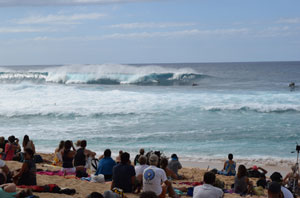September 10, 2015

Ryan and Tim took some time out in January for the 2015 International Symposium for Soil and Plant Analysis in Hawaii. It wasn’t all beaches and surfing, though, as we spent a week in Kona keeping up to date with what is going on internationally in the world of soil and plant analysis.
A timely conference to align with the Year of Soils: Stewardship through Analysis, the conferences brought together 150 delegates from research institutions, laboratories and agronomy groups from around the world. The first day involved pre symposium workshops on tissue analysis interpretation, tools for understanding soil health and unravelling potassium requirements. These were the main topics for continued discussion throughout the event.
Potassium (K) was a key topic for the conference. There is still a lot we don’t understand about soil K and agronomic decisions around K inputs. There was some great discussion around the K cycle in soils with a focus on soil mineralogy, what causes K fixation and how we can determine or calculate release rates. The take home message was that we have work to do in further understanding the process. It is reassuring to know that there will a strong international research focus in this area in the coming years.
A key question discussed was: Are the current K soil tests allowing us to make sound agronomic decisions? We are all well aware that a soil test is meaningless without field calibrations with yield response. The key considerations discussed with agronomic recommendations included:
With a focus on P and N over the years it was proposed that we have somewhat overlooked K, based on an assumption that we understood the process well enough. Is this the case? Is there room to improve production with better agronomic decisions around K? These are are all questions that will be addressed in a greater understanding of the K cycle in soils.
We will continue to provide our clients with technical updates as some of this new research becomes available.
It was a great conference, we met a lot of great people and Hawaii wasn’t a bad place for a bit or R & R.

